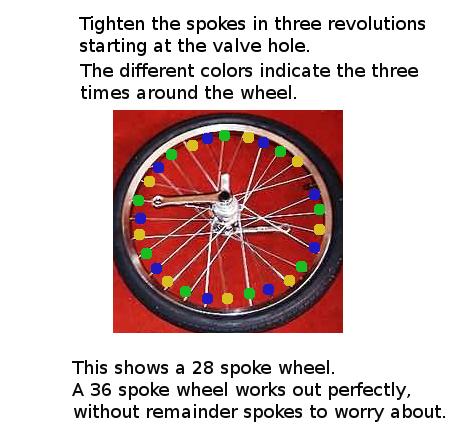Thanks guys. I know and understand the things you are saying. I was just hazy on remembering that a wheel that goes potato chip on you meant that the wheel was too tight since until I found that old thread I was recalling that info from about 30 years ago. I was 95% sure but wanted to get to 100% sure before reworking that wheel.
I guess I didn’t make it clear enough that I did all my own truing 30 years ago on my two road bikes. I did pretty much all my own bike maintenance starting when I was about 15 and tore down my BMX bike to paint it and then figured out how to put it back together. The first time I had my wheels trued the mechanic had me watch and in the future he let me use his shop to do my own wheels.
As I said the 20" and 24" went smoothly and that included pulling the 20" over a couple of mm to get it closer to center so I’ve got some skillz, not a complete noob on wheel truing.
I took my time, over an hour for each wheel since this is my first truing in 30 years and first on Unicycle size rims.
I used chalk and marked both sides as I worked. I just spun the wheel up using the cranks without pedals and held the chalk in till it was just rubbing. The wheel and the chalk did the rest. It was like automatically marking what spokes need to go which way all the way around the wheel. I loved it and don’t plan to go back to cable ties. I haven’t used it yet but I’ve prototyped some squeeze clamps and a six inch plastic ruler for checking vertical run-out.
The chalk cleaned up easy with just a wipe of fingers or at most a slightly damp paper towel or rag. Even after hundreds of markings I saw no evidence of the chalk use on my rims.
You don’t have to clean between each revolution of adjustment because as the wheel comes into true the mark the chalk mark gets longer. But I did clean after about every third revolution of adjustments. Fresh marks really helped gauge where I was at. And it was easy to get those two rims in very close to true. Like no visible wobble and getting a chalk mark all the way around no matter how I held the chalk.
I see no downside except for a little chalk dust but it says right on the box “non toxic” right next to where it says “a product of China” so I’m probably inhaling Melamine dust.
When I did do the rim cleaning is when I grabbed pairs of spokes and squeezed as I went around to bed the spokes.
Does anyone else do something similar?
Anyway back to my 29" rim. This is the first time I’ve pulled a wheel too tight. I don’t think it’s close to being ready to implode. I am right on the edge of the whole tacoing thing because I only came up about an 1/8 turn from where the rim was close to true. Some spokes I didn’t turn at all because of how much pressure I was putting on the spoke wrench told me far enough on this spoke mister.
About the 2nd time half the rim snapped out of true I knew it was time to step away and rethink what I was doing.
This time I will get it right since I now know what too tight feels like.
Thanks for the input and I’m not sure how I’m going to proceed. My plan is to check the vertical true since I did a lot of back and forth laterally and then decide.
I like the work so I have no issue taking my time and bringing it back up slowly, checking often with my trusty chalk (did I mention how much I loved using the chalk?)

